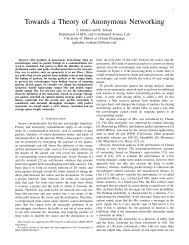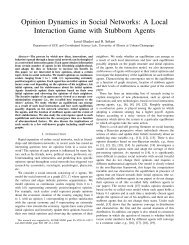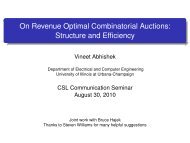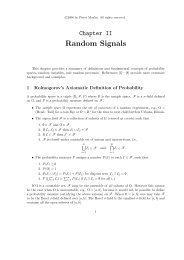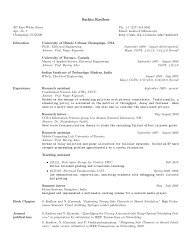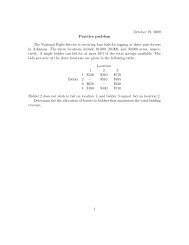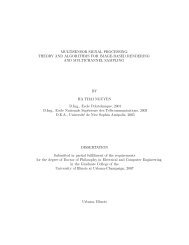The Richardson-Lucy Algorithm Based Demodulation Algorithms for ...
The Richardson-Lucy Algorithm Based Demodulation Algorithms for ...
The Richardson-Lucy Algorithm Based Demodulation Algorithms for ...
Create successful ePaper yourself
Turn your PDF publications into a flip-book with our unique Google optimized e-Paper software.
Introduction<br />
Two-dimensional ISI Channel Model<br />
Wiener <strong>Based</strong> <strong>Demodulation</strong> <strong>Algorithm</strong>s<br />
<strong>Richardson</strong>-<strong>Lucy</strong> <strong>Based</strong> <strong>Demodulation</strong> <strong>Algorithm</strong>s<br />
Comparison of Wiener and <strong>Richardson</strong>-<strong>Lucy</strong> <strong>Based</strong> <strong>Algorithm</strong>s<br />
Conclusions<br />
Some Concerns<br />
Blind and Nonblind <strong>Richardson</strong>-<strong>Lucy</strong> <strong>Algorithm</strong>s<br />
<strong>Richardson</strong>-<strong>Lucy</strong> <strong>Algorithm</strong> <strong>for</strong> AWGN Channel<br />
<strong>Richardson</strong>-<strong>Lucy</strong> <strong>Based</strong> <strong>Demodulation</strong> <strong>Algorithm</strong>s<br />
Blind <strong>Demodulation</strong> with Progressive Thresholding<br />
BER Per<strong>for</strong>mance<br />
<strong>The</strong> probability of cutting n 0 (x, y)<br />
P r [ñ 0 (x, y) ≠ n 0 (x, y)] = 1 − erf (4/ √ 2) ≈ 3.67 × 10 −6 (18)<br />
Where does ν go?<br />
v(x, y) = h(x, y) ∗ ∗s(x, y) + ñ 0 (x, y) + ν (19)<br />
Answer:<br />
v(x, y) = h(x, y) ∗ ∗ [s(x, y) + ν] + ñ 0 (x, y) (20)<br />
Zhijun Zhao and Richard E. Blahut<br />
<strong>The</strong> <strong>Richardson</strong>-<strong>Lucy</strong> <strong>Algorithm</strong> <strong>Based</strong> <strong>Demodulation</strong> <strong>Algorithm</strong>



